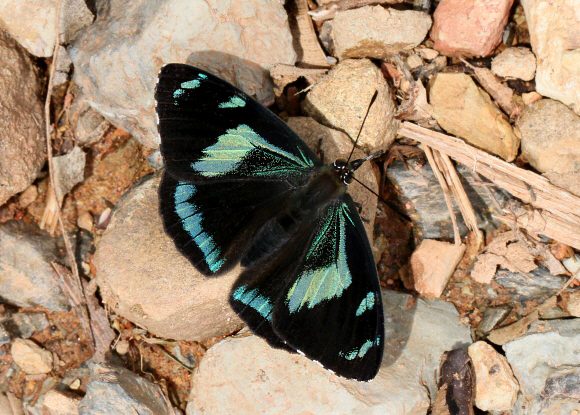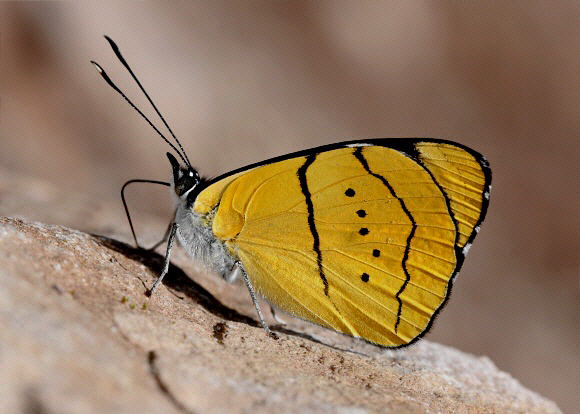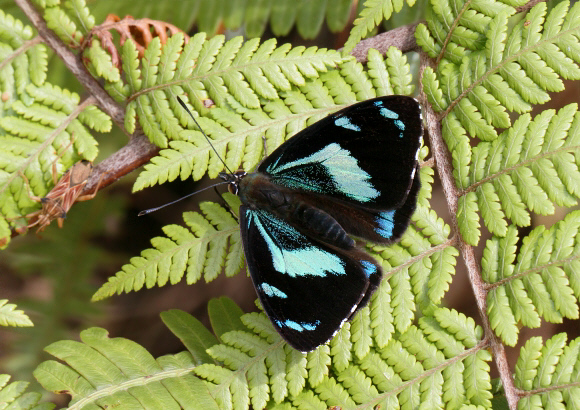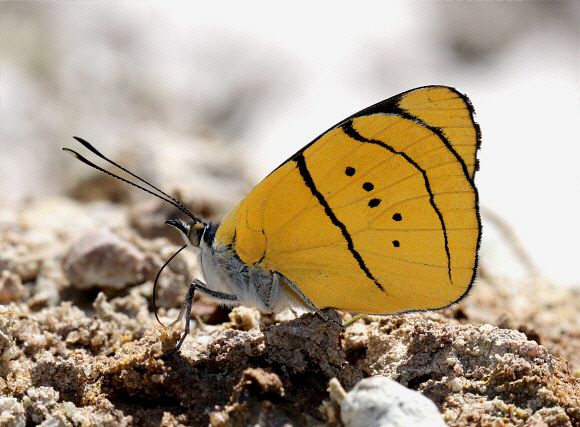 Perisama humboldtii humboldtii male, Tatama NP, Colombia – Adrian Hoskins
Perisama humboldtii humboldtii male, Tatama NP, Colombia – Adrian Hoskins
Introduction
The Biblidinae are recognised by their diverse but simple and colourful patterns. In the neotropics their representatives include the Callicorina – a subtribe of small-medium sized butterflies, marked on the uppersides with bands of metallic blue or green. The Callicorina includes the genus Diaethria, instantly recognised by the 88 or 89 markings on the undersides, and Perisama, which are similar on the uppersides, but have plain undersides marked only with dots and wavy lines.
 Perisama humboldtii humboldtii male, Tatama NP, Colombia – Adrian Hoskins
Perisama humboldtii humboldtii male, Tatama NP, Colombia – Adrian Hoskins
The genus Perisama comprises 32 known species. They are medium-sized butterflies with blackish uppersides, marked with diagonal bands of turquoise or green on the forewings. Many species also have a band of the same colour around the hindwing margins. Perisama species are found mostly in the Andean cloudforests at altitudes between 1200-2400m, but there is also a species endemic to Costa Rica, and another endemic to Mexico. Perisama humboldtii is found in the eastern Andes from Colombia to Bolivia. There are 5 described subspecies. The Peruvian subspecies tringa is regarded as a full species by Attal.
 Perisama humboldtii tringa male, Huanuco, Peru – Adrian Hoskins
Perisama humboldtii tringa male, Huanuco, Peru – Adrian Hoskins
Habitats
This species is found on the eastern slope of the Andes, at altitudes between about 400-1800m.
 Perisama humboldtii humboldtii, Tatama NP, Colombia – Adrian Hoskins
Perisama humboldtii humboldtii, Tatama NP, Colombia – Adrian Hoskins
Lifecycle
To be completed.
 Perisama humboldtii humboldtii male, Tatama NP, Colombia – Adrian Hoskins
Perisama humboldtii humboldtii male, Tatama NP, Colombia – Adrian Hoskins
Adult behaviour
The butterflies spend the early mornings and late afternoons settled high in the trees, but at about 0900hrs they suddenly become very active, and dash back and forth between the tree tops and the surface of the ground, where they seek mineral-rich moisture.
Perisama butterflies spend most of their lives high in the trees, but males often descend on warm mornings to imbibe moisture from damp patches on unsurfaced roads, dry riverbeds, or boulders. When searching for suitable mud-puddling spots they fly very rapidly, zigzagging back and forth over the ground.

Perisama humboldtii tringa, Bosque She’llot, Peru – Adrian Hoskins
